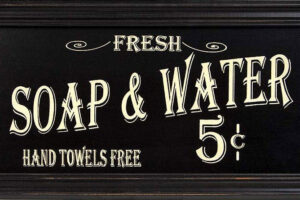
Understanding Sulfur Mustard: History, Impact, and Modern Contexts
- Posted by Mike Shertz MD/18D
- Categories Tactical CBRN
Sulfur Mustard remains a credible threat
🕖 Reading Time, 4 minutes
Sulfur mustard, a chemical warfare agent (NATO code HD) was first used during WWI and continues to be a credible chemical threat over one hundred years later. It is easily manufactured, difficult to protect against, and crude versions have been used by non-state actors in Iraq and Syria. During the Iran-Iraq war in the 1980s, there were 45,000 mustard agent casualties.
The agent is known as a vesicant because of its irritating and blistering effects on exposed skin.
Sulfur mustard was the most effective chemical agent used during WWI. Although introduced late in the war, it generated about 70% of all chemical warfare agent casualties during that conflict.



Sulfur Mustard has a low fatality rate, about 2.2% among US casualties. However, it causes skin blisters and severe eye irritation, which can last weeks, rendering soldiers combat ineffective for a prolonged period, and necessitating significant medical / nursing resources during their recovery.1
Despite traditionally being taught as smelling like garlic, onions, or mustard, the smell is generally an unreliable indicator of the agent’s presence.
Even in heavily contaminated areas, although the smell is initially apparent, an exposed individual’s sense of smelling it dissipates possibly within ten minutes of exposure. Thereafter, they are no longer aware of the smell, but that ten minutes exposure is enough to ultimately cause symptoms.2
The agent, although oily in cooler environments, rapidly becomes a vapor in hot environments. This led to a common WWI technique of early morning shelling to distribute the liquid. Then it would vaporize and disseminate as the sun rose and the battlefield warmed.
The eyes are the most susceptible organ to mustard agent exposure. Eye involvement occurred in 86% of US WW1 casualties. This ranged from eye irritation, conjunctivitis, corneal ulceration in 10%, and temporary blindness. These ocular effects can take weeks to resolve.1
The vapor doesn’t just cause blisters on exposed skin. Vapor can be trapped in clothing fibers and help contaminate both other casualties and rescuers. This trapping of vapor and the agent’s predilection for moist areas results in buttock, groin, perineum, and axillae effects even without obvious exposure there. 80 to 90% of US WW1 casualties had skin involvement. 1
The skin blisters often appear like a partial thickness burn with red, swollen, and blistered skin. These wounds can take weeks to months to heal.
With historically plentiful stockpiles and ease of manufacturing, sulfur mustard continues to be a threat.


References
All of these photos are from the Chemical Injuries Research Center, Tehran, Iran.
1Medical aspects of Chem warfare, C.A Bentley ,M.B D.P.H . D.T.M 2008.
2Timperley CM, Forman JE, Abdollahi M, Al-Amri AS, Baulig A, Benachour D, Borrett V, Cariño FA, Curty C, Geist M, Gonzalez D, Kane W, Kovarik Z, Martínez-Álvarez R, Mourão NMF, Neffe S, Raza SK, Rubaylo V, Suárez AG, Takeuchi K, Tang C, Trifirò F, van Straten FM, Vanninen PS, Vučinić S, Zaitsev V, Zafar-Uz-Zaman M, Zina MS, Holen S, Alwan WS, Suri V, Hotchkiss PJ, Ghanei M. Advice on assistance and protection provided by the Scientific Advisory Board of the Organisation for the Prohibition of Chemical Weapons: Part 3. On medical care and treatment of injuries from sulfur mustard. Toxicology. 2021 Nov;463:152967. doi: 10.1016/j.tox.2021.152967. Epub 2021 Oct 4. PMID: 34619302.
Dr. Mike Shertz is the Owner and Lead Instructor at Crisis Medicine. Dr. Shertz is a dual-boarded Emergency Medicine and EMS physician, having spent over 30 years gaining the experience and insight to create and provide his comprehensive, science-informed, training to better prepare everyday citizens, law enforcement, EMS, and the military to manage casualties and wounded in high-risk environments. Drawing on his prior experience as an Army Special Forces medic (18D), two decades as an armed, embedded tactical medic on a regional SWAT team, and as a Fire Service and EMS medical director.
Using a combination of current and historical events, Dr. Shertz’s lectures include relevant, illustrative photos, as well as hands-on demonstrations to demystify the how, why, when to use each emergency medical procedure you need to become a Force Multiplier for Good.




